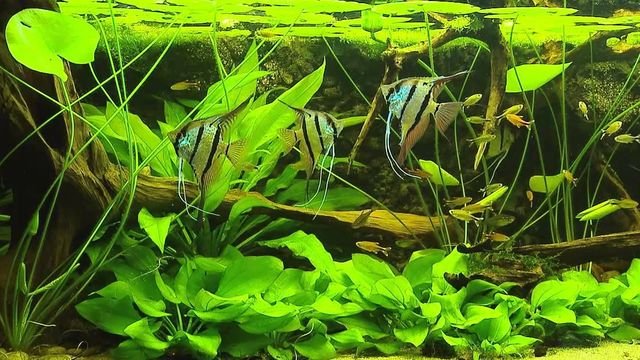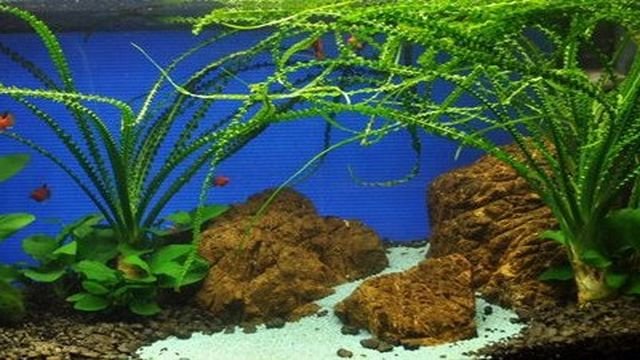Moneywort Aquarium Plant
How to Grow Moneywort (Bacopa Monnieri) in Aquarium
As an avid aquarium enthusiast, I’ve always been on the lookout for beautiful and beneficial plants to add to my underwater oasis.
That’s why I was thrilled when I discovered the Moneywort aquarium plant. This versatile aquatic plant not only enhances the aesthetic appeal of my aquarium, but it also plays a crucial role in maintaining a healthy aquatic ecosystem.
In this article, I’ll delve into the numerous benefits of Moneywort, share tips on choosing the right variety, and provide guidance on its proper placement and care.
Bacopa monnieri is a perennial, creeping herb native to the wetlands of southern and Eastern India, Australia, Europe, Africa, Asia, and North and South America.[2] It is known by the common names water hyssop,[1] waterhyssop, brahmi,[2] thyme-leafed gratiola, herb of grace,[2] and Indian pennywort.[2] Bacopa monnieri is used in Ayurveda.
Key Takeaways
- Moneywort enhances the aesthetic appeal of the aquarium with its vibrant green leaves and delicate stems.
- It acts as a natural water purifier by absorbing excess nutrients like nitrates and phosphates, helping to combat algae growth.
- Moneywort is a cost-effective and convenient option for expanding the plant population in your aquarium.
- Proper care and maintenance, including regular trimming and monitoring of water parameters, are crucial for the health and well-being of Moneywort plants.
Benefits of Moneywort in Your Aquarium
I love using Moneywort in my aquarium because it provides numerous benefits. Not only does it enhance the overall aesthetic of the tank with its vibrant green leaves and delicate stems, but it also plays a crucial role in maintaining water quality. Moneywort, also known as Bacopa monnieri, is a popular aquatic plant among aquarium enthusiasts due to its ability to absorb excess nutrients and help combat algae growth.
One of the main benefits of Moneywort is its ability to act as a natural water purifier. It absorbs nitrates and phosphates from the water, which are byproducts of fish waste and excess food. By doing so, Moneywort helps to prevent water pollution and maintain a healthy environment for fish and other aquatic organisms.
Another advantage of using Moneywort in your aquarium is its efficiency in propagating. It can be easily propagated by taking stem cuttings and planting them in the substrate. With proper care and favorable conditions, these cuttings quickly develop roots and grow into new individual plants. This makes Moneywort a cost-effective and convenient option for aquarium owners who want to expand their plant population.
Choosing the Right Moneywort Variety
When selecting a Moneywort variety for your aquarium, it’s important to consider its growth rate and preferred water conditions. Moneywort, also known as Bacopa monnieri, is a popular aquatic plant that can add beauty and oxygen to your aquarium. There are several varieties of Moneywort to choose from, each with its own unique characteristics and care requirements.
One popular Moneywort variety is the dwarf Moneywort (Bacopa caroliniana). This variety has a slower growth rate compared to other Moneywort varieties, making it ideal for smaller aquariums or for those who prefer a more compact look. It thrives in slightly acidic to neutral water conditions with a pH range of 6.5-7.5.
Another variety to consider is the giant Moneywort (Bacopa australis). As the name suggests, this variety can grow quite tall, reaching heights of up to 20 inches. It has a faster growth rate and requires regular pruning to prevent it from overshadowing other plants in the aquarium. Giant Moneywort prefers water conditions similar to the dwarf variety.
When it comes to propagation methods, Moneywort can be easily propagated through stem cuttings. Simply cut a healthy stem from the parent plant and replant it in the substrate of your aquarium. With proper care and maintenance, the new stem will develop roots and grow into a new Moneywort plant.
Proper Placement and Positioning of Moneywort
To properly position and place the Moneywort plant in your aquarium, consider the lighting requirements and potential interactions with other aquatic plants. Moneywort, also known as Bacopa monnieri, is a versatile and popular aquarium plant that can thrive in a variety of conditions. It is important to find the correct positioning for the Moneywort to ensure optimal growth rate and overall health.
One key factor to consider when placing Moneywort in your aquarium is the lighting requirements. This plant prefers moderate to high lighting conditions, so it is best placed in areas of the tank where it can receive adequate light. Placing the Moneywort near a light source, such as a fluorescent or LED light, will ensure that it gets the necessary amount of light for photosynthesis and growth.
Additionally, it is important to consider the potential interactions with other aquatic plants in the tank. Moneywort has a tendency to spread and can become invasive if not properly contained. Therefore, it is recommended to plant Moneywort in the background or midground of the tank, allowing it to grow vertically and provide a beautiful backdrop for other plants.
To emphasize the correct positioning and growth rate of Moneywort, refer to the table below:
| Positioning | Growth Rate |
|---|---|
| Background | Fast |
| Midground | Moderate |
| Foreground | Slow |
Water Conditions and Lighting Requirements for Moneywort Aquarium Plant
Considering the lighting requirements and potential interactions with other aquatic plants, maintaining suitable water conditions is crucial for the optimal growth and health of Moneywort in your aquarium.
Water temperature plays a significant role in the growth of Moneywort. It thrives best in temperatures ranging from 72 to 82 degrees Fahrenheit (22 to 28 degrees Celsius). Maintaining a stable water temperature within this range is essential to ensure the plant’s well-being.
In addition to temperature, nutrient levels in the water are also important for the growth of Moneywort. This plant requires a moderate to high level of nutrients to thrive. It benefits from the presence of macronutrients such as nitrogen, phosphorus, and potassium. These nutrients can be provided through the use of liquid fertilizers specifically formulated for aquarium plants or by supplementing the water with root tabs or substrate fertilizers.
Proper lighting is crucial for the growth of Moneywort. It’s a relatively light-demanding plant and requires moderate to high levels of light. Providing the plant with a light intensity of at least 2 to 3 watts per gallon is recommended. Using full-spectrum bulbs or LED lights with a color temperature of around 6500K will help promote healthy growth and vibrant foliage.
Maintenance and Pruning Tips for Moneywort
I regularly trim and maintain my Moneywort plant to ensure its growth and health in my aquarium. Proper maintenance and pruning techniques are essential for keeping Moneywort plants thriving and preventing issues such as overcrowding and algae growth. Here are some tips to help you maintain your Moneywort plant effectively:
- Pruning: Regularly trim the plant to control its growth and maintain its shape. Use sharp scissors to cut off any yellow or damaged leaves, as well as excessive growth that may shade other plants in the aquarium.
- Propagation: Moneywort is an easy plant to propagate, and it can be done by taking cuttings from the main plant and replanting them. Simply cut a healthy stem and remove the lower leaves before planting the stem in the substrate. Within a few weeks, new roots will develop, and a new plant will start to grow.
To further support your maintenance routine, consider the following table that summarizes the key steps:
| Maintenance Tips for Moneywort | |
|---|---|
| Pruning | Regularly trim the plant to control its growth and shape. Remove yellow or damaged leaves and excessive growth. |
| Propagation | Easily propagate by taking cuttings from the main plant and replanting them in the substrate. Remove lower leaves before planting. |
Troubleshooting Common Issues With Moneywort
One common issue that can arise with Moneywort plants in aquariums is the presence of algae. Algae are photosynthetic organisms that can thrive in aquatic environments, including aquariums. When Moneywort plants are exposed to excessive light or nutrients, it can create an ideal environment for algae growth. To combat this issue, it’s important to maintain proper lighting and nutrient levels in the aquarium. This can be achieved by using a timer to control the duration of light exposure and by regularly monitoring and adjusting the nutrient levels in the water. Additionally, introducing algae-eating organisms such as snails or shrimp can help to keep the algae population in check.
In addition to algae, Moneywort plants can also be susceptible to common pests and diseases. Common pests affecting Moneywort include snails, aphids, and spider mites. These pests can cause damage to the leaves and stems of the plant, leading to stunted growth or even death. To prevent and control pest infestations, it’s important to regularly inspect the plants for any signs of damage or pests. If pests are detected, appropriate measures such as manual removal or the use of insecticidal soaps can be taken to eliminate them.
Common diseases affecting Moneywort include fungal infections and bacterial rot. Good water quality and proper care can help to prevent these diseases. If an infection does occur, it’s important to remove and dispose of the affected plant material to prevent the spread of the disease to other plants in the aquarium.
Frequently Asked Questions
Can Moneywort Be Propagated Through Stem Cuttings?
Yes, moneywort can be propagated through stem cuttings. It is an effective way to multiply this aquatic plant. By propagating moneywort, you can enjoy its benefits in your aquarium, such as improved water quality and a natural-looking environment.
How Often Should I Fertilize Moneywort Plants in My Aquarium?
I fertilize my moneywort plants in my aquarium every two weeks to ensure they receive the necessary nutrients. It’s important to provide them with ideal lighting conditions as well for optimal growth.
Can Moneywort Survive in Low Light Conditions?
In low light conditions, moneywort can survive but may not thrive. To ensure optimal growth, provide moderate to high lighting. This will promote photosynthesis, allowing the plant to absorb nutrients and produce oxygen. Proper moneywort care includes providing the best lighting for its needs.
What Are the Benefits of Using Moneywort as a Foreground Plant in My Aquarium?
Using moneywort as a foreground plant in my aquarium has numerous benefits. It provides oxygen, absorbs excess nutrients, and creates a natural habitat for fish. To care for moneywort, provide adequate lighting and nutrient-rich substrate.
Are There Any Potential Pests or Diseases That Commonly Affect Moneywort Plants?
There are potential pests and diseases that commonly affect moneywort plants. Common issues include aphids, snails, and fungal infections. To prevent these problems, maintain good water quality, quarantine new plants, and regularly inspect and remove any pests or diseased parts.
Conclusion
In conclusion, incorporating Moneywort into your aquarium can offer numerous benefits, such as improving water quality and providing a natural habitat for fish.
By selecting the appropriate variety and ensuring proper placement, you can create a visually appealing and thriving aquatic environment.
Maintaining optimal water conditions and providing adequate lighting will promote the growth and health of Moneywort.
Remember to regularly prune and monitor for any issues to ensure the longevity of this beneficial plant.
Isn’t it fascinating how a simple plant can have such a positive impact on your aquarium ecosystem?

